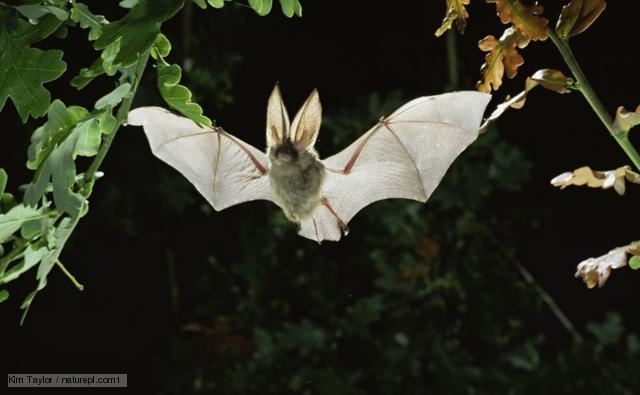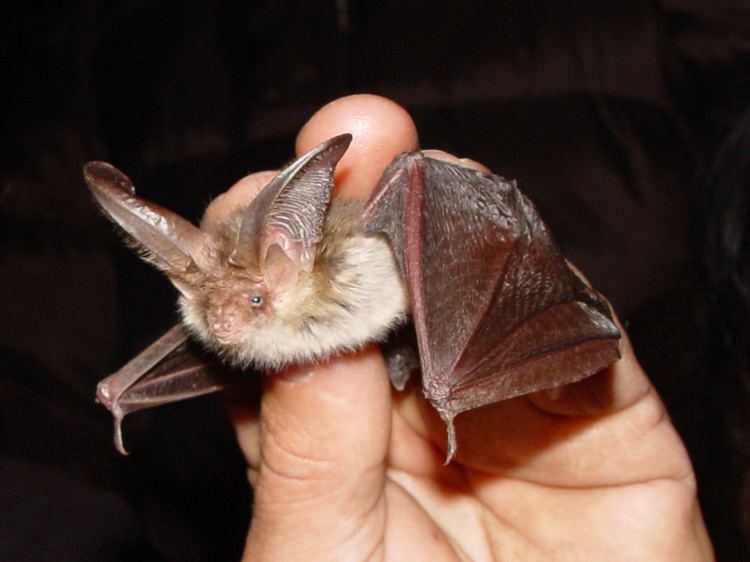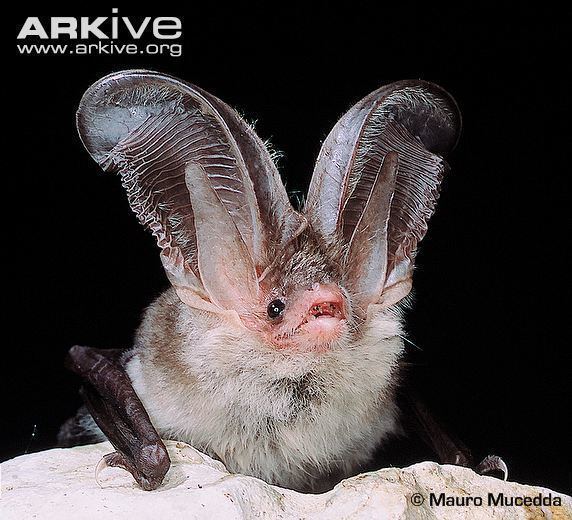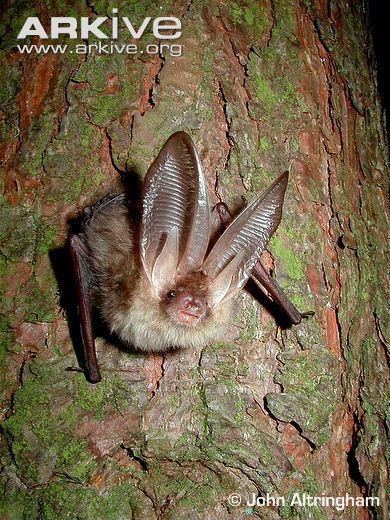Order Chiroptera Family Vespertilionidae Rank Species | Phylum Chordata Suborder Microchiroptera Genus Plecotus Higher classification Plecotus | |
 | ||
Similar Plecotus, Bat, Daubenton's bat, Mouse‑eared bat, Common pipistrelle | ||
The brown long-eared bat or common long-eared bat (Plecotus auritus) is a small European bat. It has distinctive ears, long and with a distinctive fold. It is extremely similar to the much rarer grey long-eared bat which was only validated as a distinct species in the 1960s.
Contents

An adult brown long-eared bat has a body length of 4.5-4.8 cm, a tail of 4.1-4.6 cm, and a forearm length of 4-4.2 cm. The ears are 3.3-3.9 cm in length, and readily distinguish the long-eared bats from most other bat species.

They are relatively slow flyers compared to other bat species.
Brown long eared bats
Habitat

It is found throughout Europe, with the exception of Greece, southern Italy and southern Spain. The UK distribution can be found on the National Biodiversity Network website and can be seen here.

This species appears to prefer caves as roosting sites, but roosts in trees holes, buildings and bat boxes, as well. The roosts in trees may be close to the ground.

It hunts above woodland, often by day, and mostly for moths, gleaning insects from leaves and bark. This is one of the bats for which eyesight is more important than echolocation in finding prey.
Echolocation

Echolocation is used to find prey. The frequencies used by this bat species for echolocation lie between 27–56 kHz, have most energy at 45 kHz and have an average duration of 2.5 ms.
